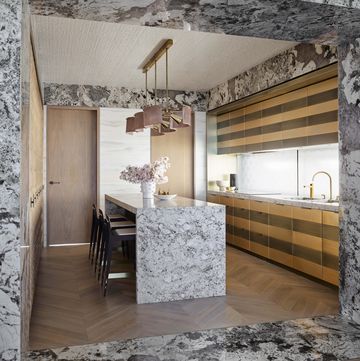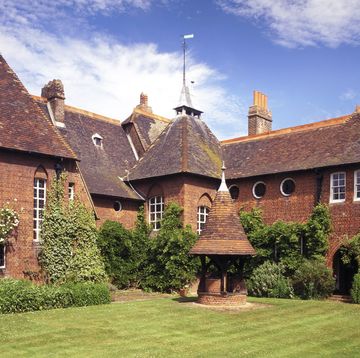Arriving at Villa Necchi Campiglio is like being transported to another world. Despite its city-centre location a stone’s throw from the Duomo, this lavish property is surrounded by an ornate garden filled with magnolia and wisteria and home to Milan’s first private swimming pool and a tennis court.
As you step inside, you are greeted by an implausibly grand lobby featuring a floor of walnut inlaid with rosewood, a marble staircase framed by a striking gold-detailed balustrade, and the promise of more delights still to be discovered as you explore. It’s not hard to see why it was used as a filming location for the movies I Am Love and, more recently, House of Gucci. Ever since its completion in 1935, this villa has incited a sense of wonder among the Italian elite.
Architect Piero Portaluppi designed the house and garden for sisters Nedda and Gigina Necchi, heirs to a successful cast-iron-manufacturing business in Pavia, and Gigina’s husband, Angelo Campiglio.
What's everyone reading?
Sparing no expense, the design combined elements of Italian rationalism and art deco with the latest technologies – including central heating, electric blinds and a dumbwaiter– to create a building that served as both a family home and a venue for high-society parties. With its marble-trimmed façade, jewel-like glass veranda and modern layout, it offered a refreshing contrast to the city’s many historic palazzos.
Neither of the Necchi sisters had children, so the villa was bequeathed to the Fondo Ambiente Italiano (Italy’s National Trust) after Gigina’s death in 2001. By this time, the house was no longer just the work of one architect; the family had commissioned Tomaso Buzzi to reimagine some of the interiors after World War II, when the building was occupied by the Italian fascist army. Compared with the stylised details and motifs of Portaluppi, Buzzi added softer, more ornamental elements that include antique furniture and textiles.
Villa Necchi Campiglio has been open to the public since 2008 and continues to offer the same dichotomy of styles. A renovation by Piero Castellini Baldissera restored many of Portaluppi’s details, but Buzzi’s touch is still visible throughout. In the library, a diamond-patterned stucco ceiling contrasts with Guglielmo Ulrich games tables, while the dining room brings parchment wallpaper together with Belgian tapestries.
There are surprises to be found too, including a collection of drawings by 20th-century masters including Picasso and Matisse. In a city that never stands still, this villa offers a moment to reflect on a fortunate, storied past. fondoambiente.it















